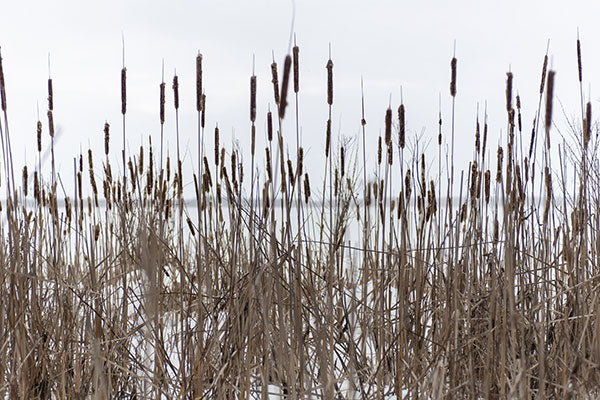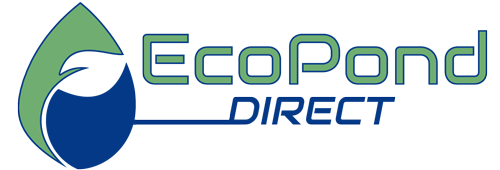What do we treat?

Emergent weeds

Typha is a genus of about 30 species of monocotyledonous flowering plants in the family Typhaceae. These plants have a variety of common names, in British English as bulrush or reedmace, in American cattails of punks.
Nymphaeaceae is a family of flowering plants, commonly called water lilies. They live as rhizomatous aquatic herbs in temperate and tropical climates around the world. The family contains five genera with about 70 known species.
Watershield is an aquatic, perennial herb with floating leaves that grows in ponds, lakes, and slow moving streams. It is widespread in North America, and is found in South and Central America, the West Indies, eastern Asia, Africa, and eastern Australia. It is a member of the Cabombaceae (watershield) family.
Phragmites is a genus of four species of large perennial grasses found in wetlands throughout temperate and tropical regions of the world. The World Checklist of Selected Plant Families, maintained by Kew Garden in London, accepts the following four species: Phragmites australis, Japonicus, Karka, Mauritainius.
Lythrum salicaria, or purple loosestrife, is a flowering plant belonging to the family Lythraceae. It should not be confused with other plants sharing the name loosestrife that are members of the family Primulaceae. Other names include spiked loosestrife and purple lythrum.
Algae

Algae is an informal term for a large, diverse group of photosynthetic eukaryotic organisms that are not necessarily closely related, and is thus polyphyletic. Included organisms range from unicellular microalgae, such as Chlorella and the diatoms, to multicellular forms, such as the giant kelp, a large brown alga which may grow up to 50 m in length. Most are aquatic and autotrophic and lack many of the distinct cell and tissue types, such as stomata, xylem and phloem, which are found in land plants. The largest and most complex marine algae are called seaweeds, while the most complex freshwater forms are the Charophyta, a division of green algae which includes, for example, Spirogyra and stoneworts.
Filamentous algae are colonies of microscopic plants that link together to form threads or mesh-like filaments. These primitive plants normally grow on the surface of hard objects or other substrates under the water but they can break loose and form floating mats.
Floating weeds
The duckweeds (genus Lemna) and related genera of the duckweed family (Lemnaceae) are the smallest flowering plants known. Individual plants consist of a single, flat oval leaf (technically a modified stem) no more than ¼ of an inch long that floats on the surface of still-moving ponds, lakes, and sloughs.
Wolffia is a genus of nine to 11 species which include the smallest flowering plants on Earth. Commonly called watermeal or duckweed, these aquatic plants resemble specks of cornmeal floating on the water. Wolffia species are free-floating thalli, green or yellow-green, and without roots.
Water Hyacinth is a free-floating perennial aquatic plant (or hydrophyte) native to tropical and sub-tropical South America. With broad, thick, glossy, ovate leaves, water hyacinth may rise above the surface of the water as much as 1 meter (3 feet) in height
Pistia is a genus of aquatic plant in the arum family, Araceae. The single species it comprises, Pistia stratiotes, is often called water cabbage, water lettuce, Nile cabbage, or shellflower.
Pistia is a genus of aquatic plant in the arum family, Araceae. The single species it comprises, Pistia stratiotes, is often called water cabbage, water lettuce, Nile cabbage, or shellflower.
Submerged Weeds

Hydrilla poses a serious ecological threat. Its ability to grow in various conditions gives it an advantage that allows it to out-compete native plants. Infestations of hydrilla can be harmful to fish populations as well. Large infestations can cause oxygen depletion zones which can lead to fish kills.
Milfoil Non-native species like zebra mussels make national news, but the dangerous plant variable milfoil is rarely discussed outside of lake communities. ... The plant not only destroys ecosystems but also inhibits recreational water activities, as the dense mats of milfoil make boating or swimming impossible.
Curly-leaf pondweed (Potamogeton crispus) is a rooted submerged plant that quickly forms dense mats at the water surface of lakes and rivers in late spring and early summer. In late fall and early winter, it sprouts from rhizomes and turions (overwintering buds) shading out later growing native plants.
Coontail is a bushy-looking bay grass with whorls of stiff, forked leaves along densely branched stems. It grows mostly in quiet freshwater areas such as the upper Chesapeake Bay and rivers, streams, lakes and ponds throughout the Bay watershed.
Sago Pondweed is a submergent aquatic plant that does not grow out of the water. It only grows to the water surface and the ducks and geese will dive down to get at the tubers (or bulbs) of the plant. It also produces a seed in the fall of the year that the ducks will feed on.
Clasping-leaf pondweed can be easily identified by its thin, delicate, oval shaped leaves. The leaves are wide and wavy with a broad base that clasps around the stem. ... Clasping-leaf pondweed can sometimes be confused with Curly-Leaf Pondweed.
Effective solutions for treating aquatic plant issues
If you're facing issues with aquatic plants in your outdoor spaces, we offer a range of pond water treatment products specifically designed to deal with such challenges. Our selection includes organic pond treatment solutions that not only help preserve the natural ecosystem of your pond but are also effective in treating industrial wastewater. These eco-friendly products benefit both home ponds and larger bodies of water and are designed to provide sustainable solutions for treating and managing the excessive growth of aquatic plants. The safety and effectiveness of our pond water treatment products make them the ideal choice for those seeking environmentally conscious ways to maintain their aquatic spaces. Whether you're dealing with issues in your home pond or treating industrial wastewater, we have potent organic solutions to meet your needs.
Maintaining balanced pond water nutrients
Maintaining balanced pond water nutrients is vital for a healthy, thriving aquatic ecosystem. This balance is critical to preventing an overgrowth of weeds and algae that can be detrimental to your pond's overall health and appearance. The overabundance of these elements can limit oxygen levels, impede aquatic life, and affect the visual beauty of your pond. Pond water nutrients must be carefully managed, ensuring they remain at optimum levels for the ecosystem's sustainment. The right balance can be achieved using targeted pond water treatment products. These products are formulated to control nutrient levels efficiently, helping you maintain a healthy balance in your pond supporting not only the water quality but also the aquatic life within it. Invest in high-quality pond water treatment products today to safeguard your pond's health, aesthetics, and ecosystem balance.
Revitalizing ponds with organic treatment methods
Experience a rejuvenation of your pond with our organic pond treatment methods. Our pond water treatment products are crafted thoughtfully, keeping the ecosystem's and wildlife's wellness paramount. The organic solutions we provide give superior control over invasive aquatic flora and foster a healthy habitat. Using organic pond treatments reduces harm to the environment while maintaining optimal pond health – a balance that can only be achieved through our thoughtful, organic approach.
